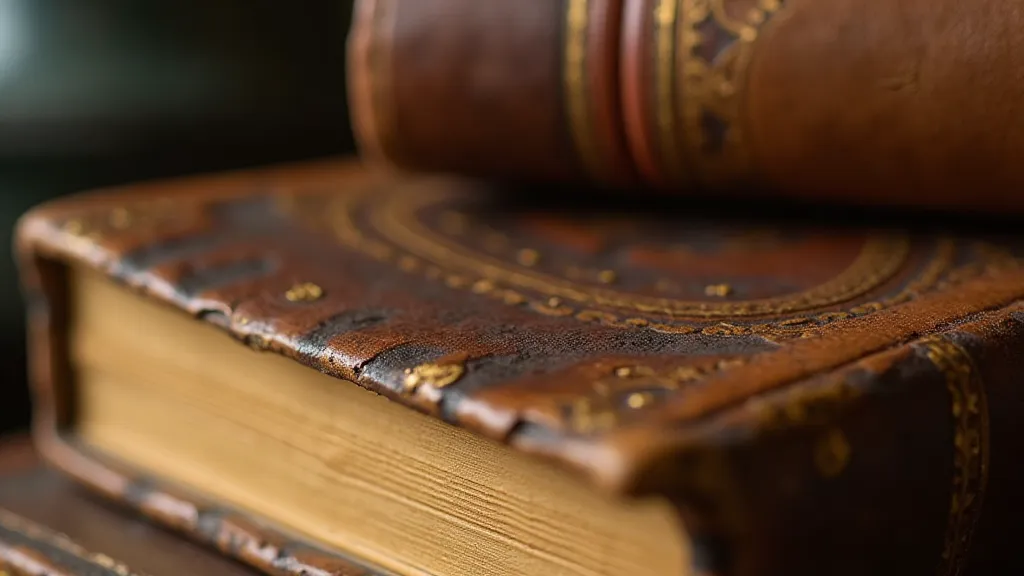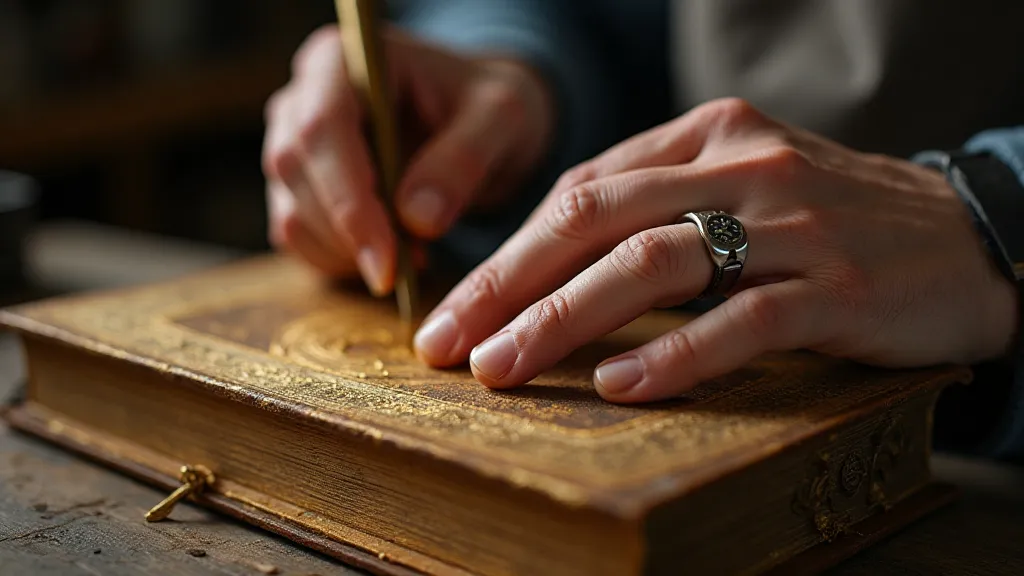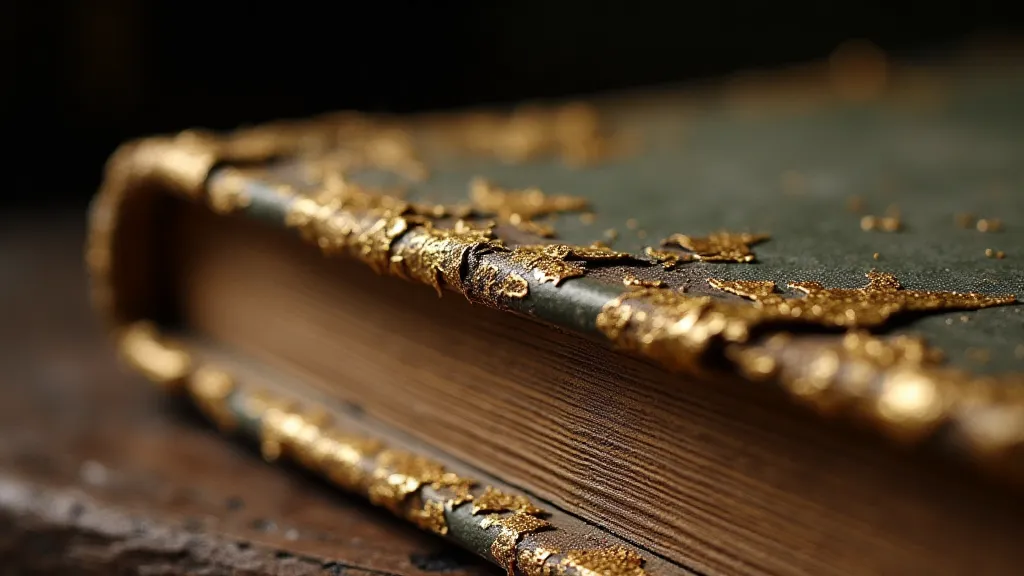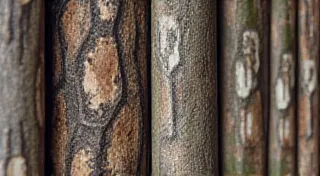Beyond the Visible: Unveiling the Subtle Art of Edge Gilding in Leather Bindings
There's a particular resonance I find in old things. Not just the visual appeal of aged wood or faded ink, but the echo of a past held within them. I recall finding an antique accordion at a flea market years ago. Its bellows were cracked, the keys sticky, and the leather casing worn thin. But when I tentatively drew the bellows open, a faint, reedy melody escaped, a ghostly waltz from a vanished era. It wasn’s the music itself, but the feeling – the sense of countless hands drawing that same bellows, of countless ears listening to that same melody – that captivated me. It was a tangible connection to a history far older than my own. The same feeling permeates a beautifully bound leather book, and particularly so when it boasts the overlooked beauty of edge gilding.
We often admire the rich color and texture of leather bindings, the intricate tooling, and the graceful curves of the spine. But the edges – often obscured by protective wrappers in modern books – hold a silent revelation for those who understand their significance. Edge gilding, the application of gold leaf to the exposed edges of the page block, is more than just decoration; it's a testament to the binder’s skill, a mark of luxury, and a whisper of history.

A Historical Perspective: Gold’s Enduring Allure
The practice of edge gilding dates back centuries, appearing in manuscripts and early printed books. The Byzantine Empire, renowned for its opulence, heavily employed gold in its manuscripts, setting a precedent for subsequent cultures. In medieval Europe, gold leaf was often applied to the edges of Psalters and liturgical books, reserved for the wealthiest patrons and most sacred texts. The process wasn’t simple; it demanded a steady hand, a keen eye, and considerable experience. Early techniques involved applying a thin layer of adhesive – often gelatin-based – and meticulously laying sheets of gold leaf onto the edge. The excess gold was then burnished away using a smooth, hard tool, leaving behind a shimmering, durable finish.
The Renaissance saw a blossoming of bookbinding artistry, with binders in Italy, Germany, and the Netherlands elevating the craft to new heights. Dutch Golden Age bindings, known for their exquisite leather tooling and vibrant colors, frequently featured gilded edges. It’s fascinating to consider how the entire structure and support of these exquisite bindings relied on a deep understanding of materials – a concept explored further in articles discussing the spine’s critical role. The 18th and 19th centuries continued this tradition, with elaborate tooling and gold leaf embellishments becoming hallmarks of luxury bindings. During this period, mechanical gilding became more prevalent, though hand-gilding remained the preferred method for the most prestigious volumes. The beauty and permanence of these creations are intimately linked to the care taken in understanding the very nature of the leather used; a deeper understanding can be found by exploring how material memory resides in ancient scripts.
The Craftsmanship Behind the Shine
The process of edge gilding, even today, remains a labor-intensive undertaking. It begins with preparing the edges of the book block. These edges need to be perfectly smooth and free of imperfections. This is achieved through careful trimming and sanding, a task demanding precision. A heat-sensitive adhesive, often called "gilding size," is then applied to the edges. This adhesive needs to be applied evenly and at the correct temperature to ensure proper adhesion of the gold leaf. Timing is critical; the gilding size needs to be tacky but not wet.
Next comes the delicate application of the gold leaf. Gold leaf is incredibly thin—approximately 0.1 micron—and incredibly fragile. It’s typically applied using a specialized brush, often made from badger hair. The leaf is gently laid onto the prepared edge, ensuring complete coverage. Once the gold leaf has adhered, it’s burnished—polished—using a burnishing tool, usually made of agate or bone. This process compresses the gold leaf, creating a smooth, reflective surface. The final step involves cleaning the edges, removing any residue and polishing the gold to a brilliant shine. The artistry involved extends beyond the immediate gilding process; a comprehensive appreciation requires understanding the nuances of decorative leather binding and the complex interplay of techniques employed.

Recognizing and Appreciating Gilded Edges
For collectors and those with an appreciation for fine bookbinding, recognizing gilded edges is an important skill. The quality of the gilding can vary considerably. A poorly executed gilding may show signs of uneven coverage, dullness, or flaking. High-quality gilding, on the other hand, will appear smooth, reflective, and durable. The color of the gold can also vary, ranging from a deep, reddish-gold to a bright, yellow gold. This variation is due to the alloy used to create the gold leaf.
When examining a book with gilded edges, look for signs of aging. A slight tarnish on the gold is common and can actually enhance the book’s character. However, excessive tarnish or flaking may indicate that the gilding is deteriorating. If you are considering purchasing a book with gilded edges, it’s always a good idea to examine the gilding carefully and ask the seller about its condition. The value of these items isn't just about the immediate aesthetic appeal but also the story they tell about a time and craft long past. This appreciation becomes even richer when considering the techniques employed to create those decorative leather binding and the understanding of the materials used.
Beyond Aesthetics: Conservation and Restoration
The fragility of gilded edges presents unique challenges for book conservators. Damage can occur due to handling, environmental factors, or improper storage. Restoring gilded edges is a complex and delicate process that requires specialized knowledge and skills. Conservators may use a variety of techniques to stabilize and repair damaged gilding, including re-gilding, consolidating loose gold leaf, and repairing damaged edges. It's an iterative process, often requiring a deep dive into the historical techniques used in the original binding.
Preserving a book with gilded edges requires careful attention to environmental conditions. The book should be stored in a cool, dry place, away from direct sunlight and extreme temperature fluctuations. Handling should be minimized, and the book should always be supported when opened. Regular cleaning with a soft, dry cloth can help to remove dust and grime, preserving the beauty of the gilded edges for generations to come. Beyond the immediate steps of cleaning and storage, a holistic approach to preservation considers the deep connection between materials and meaning – a concept explored further by examining material memory in ancient scripts.

The subtle shimmer of gilded edges speaks volumes about the dedication and artistry of the bookbinder. It's a quiet testament to a tradition that has endured for centuries, a link to the past, and a source of beauty that deserves to be recognized and appreciated. It is, in essence, a tangible echo of the past, much like the faint melody that resonated from that ancient accordion. The techniques involved are so intricate and demanding that one might wonder about the binders themselves - their training, their lives, and their role in preserving this cherished art form. It's a connection to a lineage of artisans, each contributing to the ongoing legacy of exquisite craftsmanship.





